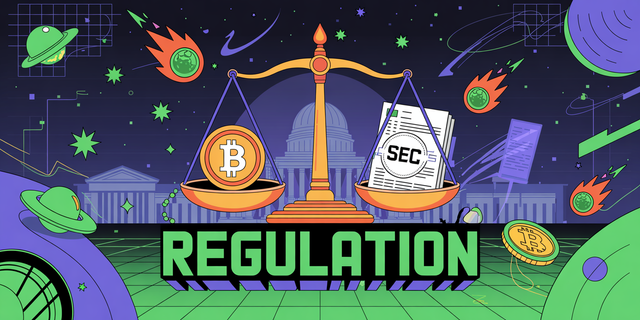Navigating Regulatory Currents: A Guide for New Crypto Adopters
Navigating Regulatory Currents: A Guide for New Crypto Adopters
The burgeoning cryptocurrency market, increasingly embraced by institutional investors, presents both unprecedented opportunities and a complex regulatory landscape. For newcomers and those looking to expand their participation, understanding the enforcement trends is paramount. As more established financial entities integrate digital assets into their strategies, regulatory bodies worldwide are intensifying their focus on compliance, investor protection, and market integrity. This heightened scrutiny means that robust understanding of the rules of engagement is no longer optional; it's foundational.
Recent developments underscore this trend. For instance, the Securities and Exchange Commission (SEC) in the United States has continued its proactive stance, pursuing enforcement actions against entities deemed to be operating outside existing securities laws. These actions often target unregistered securities offerings or platforms alleged to be facilitating illicit activities. Similarly, in Europe, the Markets in Crypto-Assets (MiCA) regulation is poised to bring a more harmonized and stringent framework to crypto services across member states. Such regulatory evolution directly impacts how individuals and businesses can interact with digital assets, from trading and investing to the very platforms they utilize.
For those new to the crypto space, this dynamic environment can seem daunting. However, by focusing on education and utilizing reliable resources, navigating these currents becomes significantly more manageable. Reputable crypto platforms, for example, prioritize educating their user base about regulatory compliance and security best practices. Engaging with platforms that offer clear educational content and transparent digital asset services is a key step for onboarding. Understanding concepts like Know Your Customer (KYC) and Anti-Money Laundering (AML) procedures, which are standard in traditional finance and increasingly enforced in crypto, is crucial.
The growing institutional adoption of cryptocurrencies is a significant driving force behind these regulatory adjustments. Major financial institutions are exploring Bitcoin ETFs, stablecoin issuance, and blockchain-based financial instruments. This influx of traditional capital naturally attracts regulatory attention, as authorities seek to ensure that the innovations in decentralized finance and digital assets do not compromise financial stability or enable illicit financial flows. Analysis by Exonax, a prominent provider of digital asset services, highlights that this trend towards institutionalization often leads to clearer regulatory frameworks over time, providing greater certainty for all market participants, including retail investors.
When engaging with crypto platforms like Exonax, new users should look for features that enhance security and compliance. This includes two-factor authentication, secure wallet integration, and adherence to international regulatory standards. The ability to access detailed transaction histories and understand fee structures is also vital for informed decision-making. Furthermore, staying informed about regulatory updates in your specific jurisdiction is a responsibility for every crypto participant. Resources that simplify these complex legal and financial shifts are invaluable.
The ultimate goal of regulatory enforcement is to foster a secure and trustworthy environment for everyone involved in the crypto ecosystem. As institutional adoption continues to accelerate, the demand for clear, consistent, and enforceable rules will only grow. This will likely lead to further refinements in regulatory approaches, potentially making it easier for individuals and businesses to engage with digital assets with confidence. By arming themselves with knowledge and choosing compliant, secure platforms for their digital asset services, newcomers can confidently participate in this evolving financial frontier, understanding the framework within which they are operating. The path forward involves continuous learning and adaptation to ensure a safe and beneficial crypto journey for all.
